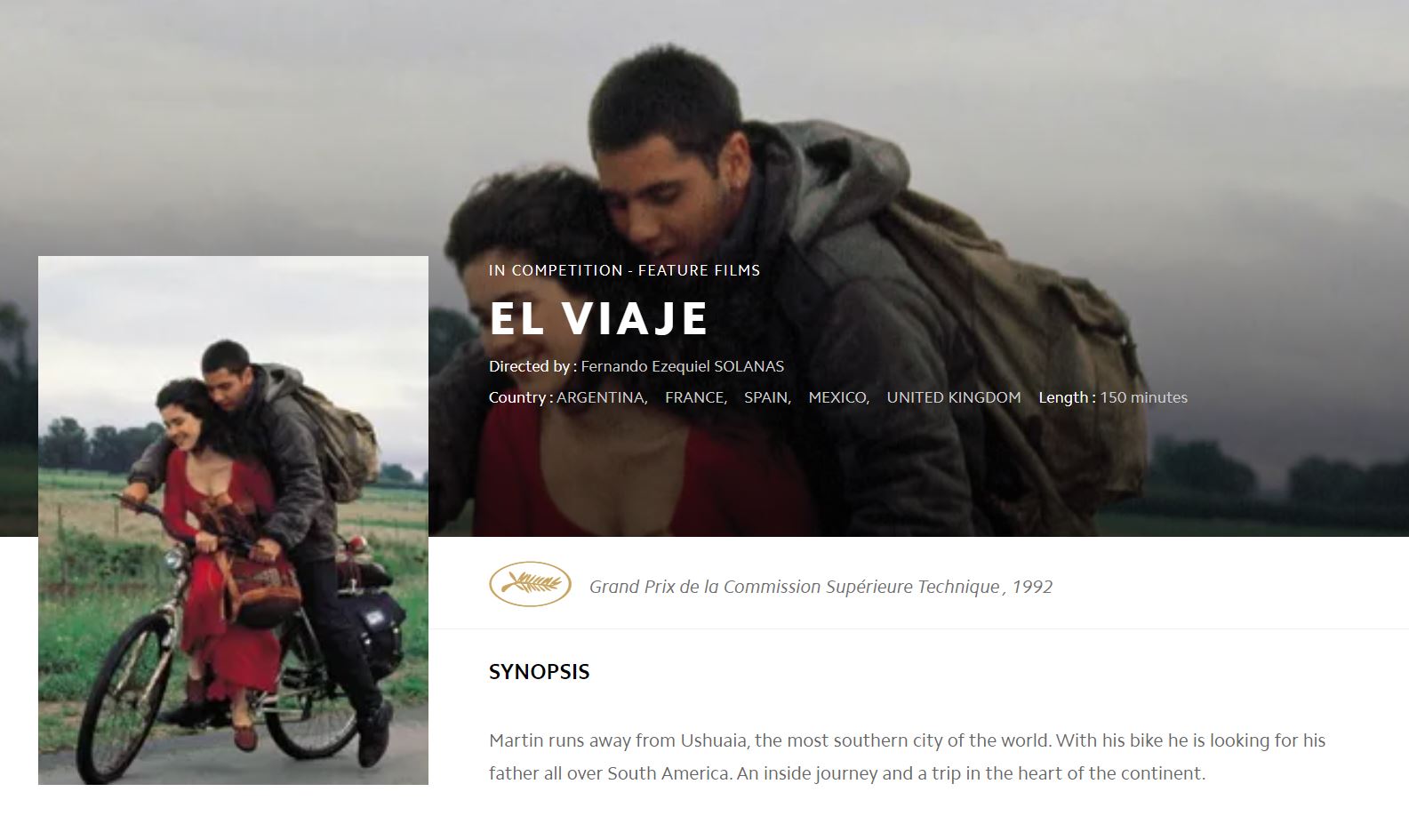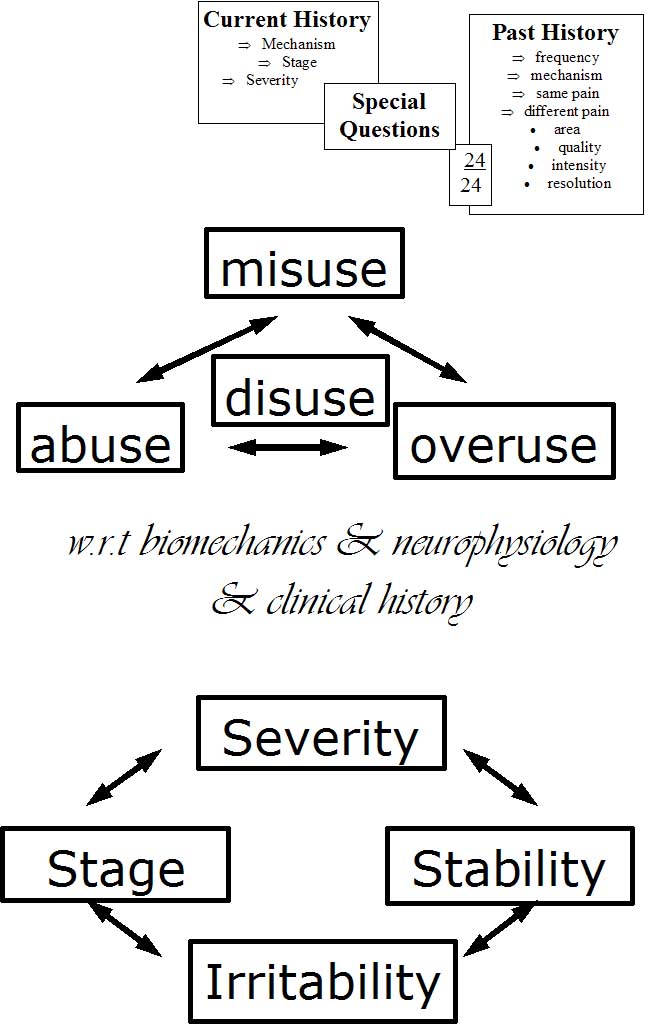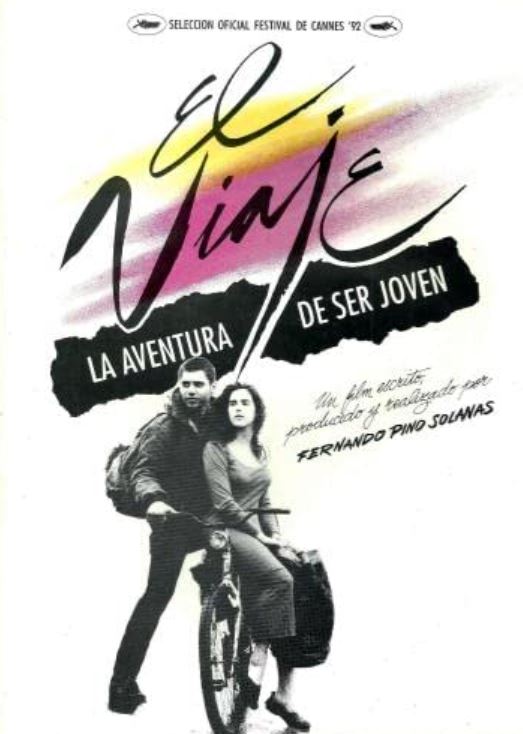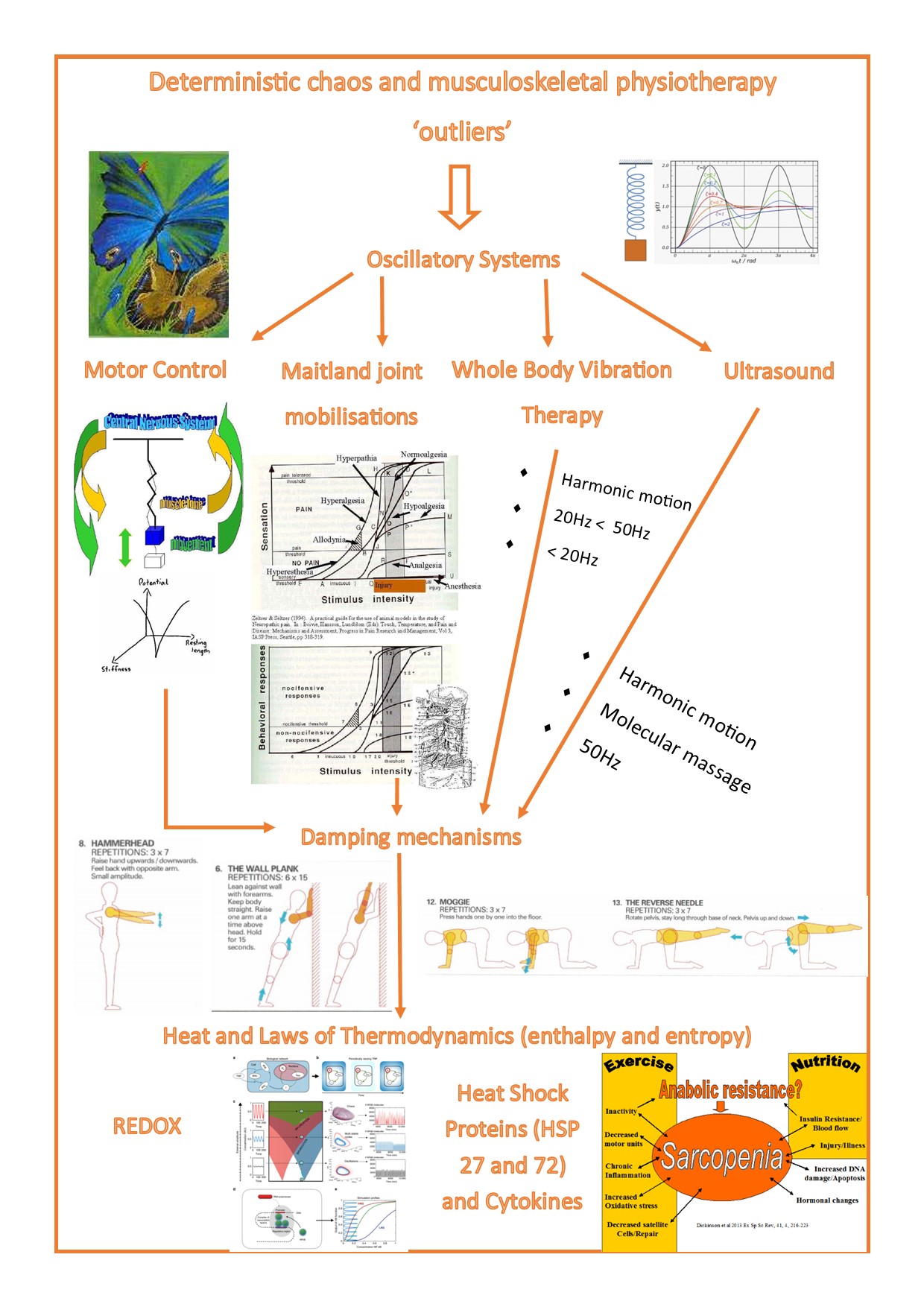Reflections over 35 years on the development and set backs in musculoskeletal physiotherapy
by Martin Krause (December 2020)
Having graduated from Cumberland College Health Science, Sydney, Australia in 1986, I was fortunate. We had a burgeoning profession in the art and craft as well as the embryonic science of Musculoskeletal Physiotherapy. At my time of graduation there wasn't a single Physiotherapy PhD at the College. The college wasn't yet affiliated with Sydney University. However, it turned out, that what we were learning in Australasia, was at the forefront of physiotherapy worldwide.
These included
- Wet cadaver labs for training in anatomy.
- Post graduate Manipulative Physiotherapists teaching us, under graduates, Manual Therapy.
- Based on Post Graduate Biomechanics qualifications, Jenny McConnell and Robyn Grote were commencing their careers, with new concepts such as patella taping, tendon proprioception, and motor control.
- Janet Carr and Roberta Shepard were describing the conundrums of movement control, Bernsteins degrees of freedom and Kugler and Turveys oscillatory control systems,
- We still learnt PNF (Proprioceptive Neuromuscular Facilitation), massage and movement analysis.
- World acclaimed professors, the late John Sutton and Greg Gass were teaching us work physiology.
- Neurophysiology was taught with an over-whelming emphasis on pain and motor control.
- We were some of the first graduates in a new form of teaching which involved continuous learning, project based and experiential assessment and competency criteria.
- Clinical reasoning was used for the first time, which meant placing value on clinical signs and symptoms, rather than a diagnostic medical lead referral system, thus leading to Australasian physiotherapists being some of the first primary practitioners in the world.
- Researchers and clinicains from South Australia (Geoff Maitland, David Butler, Michael Sherlock, Pat Trott), Curtin University (Bob Elvey, Brian Edwards, Lance Twomey, Max Zusman), University of Queensland (Julie Hides and Gwen Jull) were changing the world in terms of our understanding of Manual Therapy
The journey
This is one of the first website on physiotherapy to ever exist. Originally published in 1998, it came about after a culmination of a decade of teaching and presenting workshops around the world. These were often countries who had little to no access to Australian Manual Therapy. Although I no longer teach, I continue to regularly update this website, hoping to make an impact on my profession and all the people my profession treat. My philosophy in teaching was to 'train the trainers'. Although each update has only a hand full of readers, I had the experience, whilst cycling across Argentina, that one newspaper and radio interview with me, about my interpretation on life, can led to a film, which was presented at the Cannes Film Festival in 1992. From that moment on, I realised even an impact on just one person, may have multiplier affects, beyond our wildest imaginations.
In November 1990, four friends set out on a 6 month journey, from Buenos Aires to the Chilean coast at La Serena, Ushuaia to the Bolivian Alti Plano and later the jungles of the Amazon, wetlands of the Pantanal and the Littoral of Uruguay. We were in for a few surprises, including an attempted coup d'etat and hyperinflation. This meant we needed to sleep 'wild' including staying under bridges and making use of abandoned homesteads. Luckily, the truck stops became a haven for food, as the only thing which was affordable were the parrilladas. Drivers would tell people that we were coming, in return for what seemed like bigger and bigger servings of meat, potatoes and salad, they wanted me to tell our story. Of our adventure, where we were from, Australia, and where we were going - to Patagonia!!! We were often accompanied out of town by convoys of excited people. Not only, the people of the truck stops, but journalists wanted our story. These were the days, before the internet, where story telling and the bush telegraph reigned. They were also the years immediately after the 'dirty war' (la guerra sucia), where knowledge was considered dangerous and the memories of the 'disappeared' (desaparecidos) were fresh. The interviews were sometimes quite simple, whereas at times, nothing was off limits, from philosophy to politics. Literature included 'The Kiss of the Spiderwoman' by Manual Puig, Eduardo Galeano (Age of Fire) to Jorge Luis Borges, Gabriel Garcia Marquez (100 Years of Solitude, Love in the Time of Cholera, The Genral in his Labyrinth) to Pablo Neruda and Mario Vargas Llosa (City of Dogs, Aunt Julia and the Script Writer) with the metaphorical images from the deep dark forests of the Chilean Lakes District to the Afro-Caribbean mysticism of Colombia. Politics, included contrasting Peron with, the famous son of Argentina, Che Guevara to the Sendero Luminoso in Peru. One interview, stood out in particular, where all these topics were covered, including metaphors, in the conditional subjunctive vernacular of the Argentine narrative, broadcast on the radio and written up in the newspaper. Two years later, in 1992, in the 500th year since Columbus discovered America, I was sitting in a cinema, in Basel, Switzerland. The movie, El Viaje, was showing. It was about a boy called Martin, who was cycling around South America. The opening scene was in a secondary high school, in Ushuaia, where the teacher says 'sit down Krause'. I, and my friend were stunned!!!! I cannot take the credit for the artistic brilliance of the film. I'm not even sure if I ever met with Fernando Solanas, so I'll never know if I germinated the seed of the ideas portrayed in the film, or whether he just needed a central character to have a name.
Critical appraisal of El Viaje
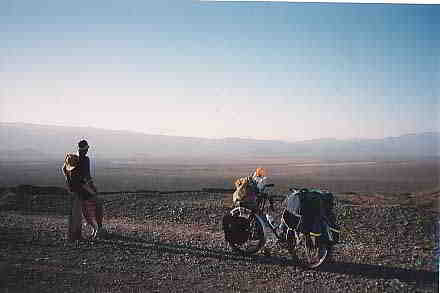
On the way to Passo de Aguas Negras and La Serena, Argentina/Chile, 1990
Oscillations - manual therapy and motor control
I spent 1986 delving into the conundrum of shoulder stability - the control of a system with almost an infinite number of movement permutations. Here, some of the giants in human movement research were using the oscillatory pendulum and Hooke's mass - spring as an explanation to motor control. An inflection point of stability, weighted by muscular tone and balanced forces allowing for the ranges of movement needed, in the shoulder, for the huge range of activities, we as humans, put our shoulders through. Similarly, I used an anatomical dissection to explain knee stability. Three and half decades later I examined the same principle of oscillatory systems but now with an emphasis on deterministic chaos theory, redundant systems and their interplay based on physiological, neurophysiological and immune 'outliers'. The outlier which dampens, modulates and moves nearby oscillatory systems.
Oscillations continued to fascinate and impress. Australian Manual Therapy had been derived from the Grand Masters, James Cyriax (London, UK), James Mennell, Alan Stoddard and Greg Grieve (Norwich, UK). There was a famous meeting in St Thomas's, London, in 1967 where the greats of physiotherapy met and discussed the later creation of IFOMT (International Federation of Manual Therapy) in 1974 (Montreal) and the first meeting in Gran Canara in 1975 . People in attendance included Geoff Maitland, Freddy Kaltenborn, Stanley Paris, and Robin McKenzie. The first home office of IFOMT was by Ian Searle, a New Zealander. Later, other greats such as Bob Elvey (Western Australia) became involved. Although, this appears like a coming together of 'minds', there was a fundamental clash between the biomechanics based sustained stretch of Kaltenborn and their Nordic Technique (OMT), with the oscillatory movements, advocated by Geoff Maitland in Australia. When I arrived in the UK in early 1988 I found a job, at the Norwich & Norwich hospital, where Greg Grieve had been working. Physiotherapists were the main 'port of call' at A&E. I learnt a lot from the physiotherapists as well as guest international speakers. The NHS was a great place to learn and work in a collaborative manner. A responsibility seldom given to physiotherapists at that time. Later that year, whilst in Switzerland, I was fortunate enough to gain invaluable experience at the Medizinisches Zentrum, Bad Ragaz, where I met Geoff Maitland and was able to attend courses with Peter Wells, where spinal manipulations were taught.
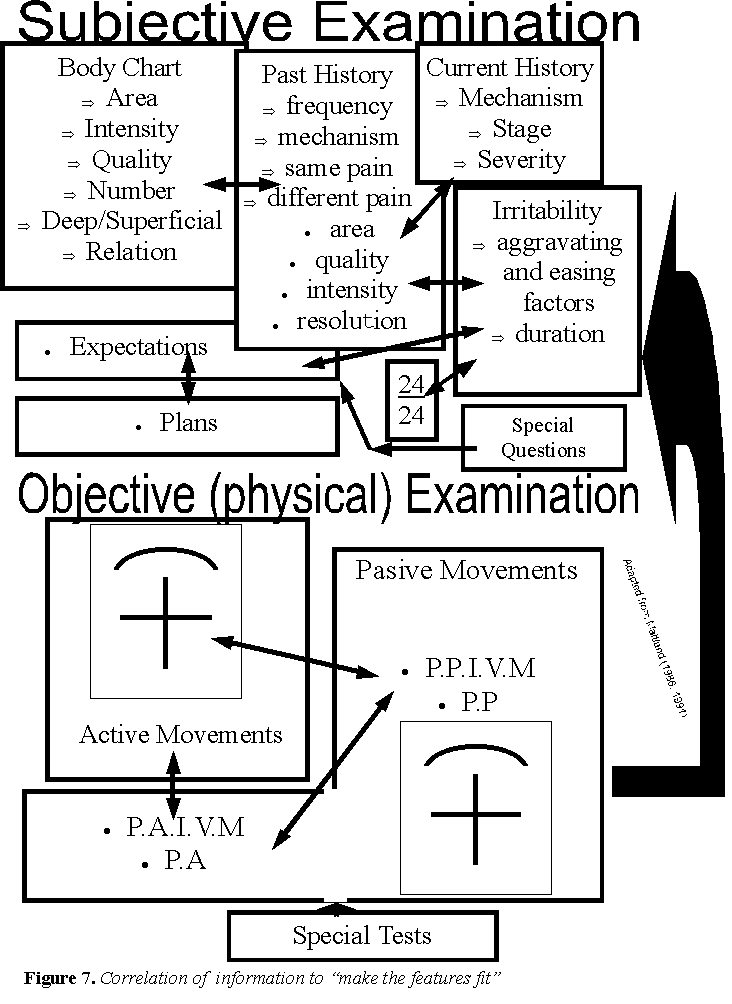
Maitland examination procedure circa1986 - 1991
The Maitland technique, chased the pain, whereas Kaltenborn chased the biomechanical dysfunction. Both were very precise and both had their merits and limitations. Luckily, in Bad Ragaz I was able to work with OMT trained physiotherapists and learn from them, combined movements, 'locking off and adjusting' spinal joints. Later, in 1991, I had the opportunity to attend a course with David Lamb (Canadian, previously from the UK) where i learnt the OMT method of cervical manipulation. Meanwhile, the Post Graduate program of Manipulative Physiotherapy had been developing in Australian Universities since the early 1980's and was a much sort after qualification, which I completed in 1994. Later, in 1995, I was able to learn mobilisations with movement (MWM) from Brian Mulligan (a New Zealander). He was a very pragmatic and very funny fellow, whose niece I happened to meet, serendipitously, as a client many decades later. All these encounters allowed me to mix and match the best of all worlds and eventually impart that knowledge in the form of Manual Therapy workshops in Chile, Brasil, Japan and Europe.
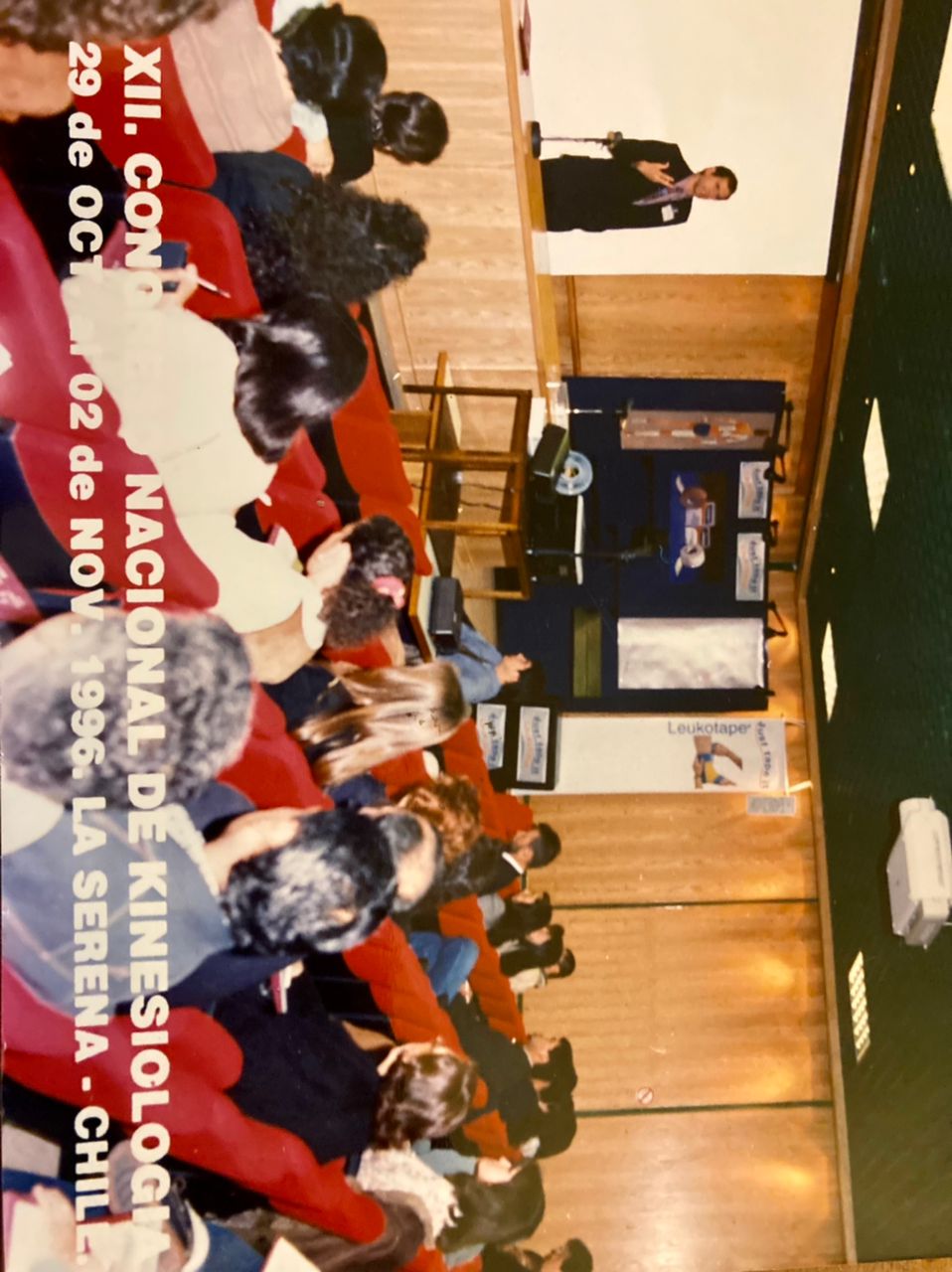
Teaching in La Serena, Chile 1996
Adverse Neural Tension : passive to the active
By 1988, I was seriously interested in the nexus between the assumingly 'passive' manual therapy approach and their amazing results (with very little, almost imperceptible loading), and active approaches using motor control and exercises. Bob Elvey and David Butler came onto the scene with Adverse Neural Tension (ANT) whereby mobilisation of nerves improved clinical signs and symptoms. Remarkably, a very 'passive biomechanical' explanation was used. My Masters Treatise, in 1995, was examining the immediate effects of Mechanical Traction on ANT within a very precise dosage range, using a 'descending modulation' neurophysiological argument. In the early 1990's I attended the International Association Study Pain (IASP), in Paris, where the seminal work of French researchers, on the descending modulation of pain, took the emphasis away from the 'pain-gate' Wall and Melzack theory of peripheral - spinal cord modulation and added an extra dimension of descending noradrenergic pathways. This was the first time the pain brain function was being imaged using the new technology of PET and MRI scans. This made a lot of research, in manual therapy, using double blind studies redundant, as it became increasingly obvious that the patient is actively involved in recovery, even when a passive device such as Mechanical Traction is applied. In fact, Geoff Maitland was thought to have said that 70% of the examination process was the 'subjective' examination, with it's inductive and deductive reasoning, 20% the physical examination and the remaining 10% treatment. Luckily, I had close interactions with Bob Elvey, Max Zusman, and later David Butler where ideas and visions could germinate further.
Proprioceptive Neuromuscular Facilitation (PNF) and functional movement control by Klein Vogelbach (FBL)
Bad Ragaz, also gave me exposure to PNF trained physiotherapists. These were a generation of physiotherapists, on the cusp of retiring, who'd gone to Vallejo, California in the 1970's to learn PNF and become teachers in their field. Simultaneously, another group of physiotherapists, in Bad Ragaz, were involved in teaching FBL, where movement analysis and the ability to describe in words what was being seen 'statically' or 'in action' determined specific choices from a plethora of exercises. Primarily, only known in Switzerland, some of these exercises became world famous in the form of the Swiss Ball. Although PNF techniques were originally designed for neurological patients, these strengthening and mobilising methods were morphed into musculoskeletal injury management, where PNF techniques were often combined with Swiss Ball and FBL techniques to optimise (sporting) outcomes.

Teaching in Salvador da Bahia, Brazil 1998
PNF techniques morphed into Muscle Energy Techniques (MET), as learnt from David Lamb. MET, I still use today for the treatment of pelvic, hip and back dysfunction. Concepts of form and force closure and the influence of the thorax were later developed by Canadian Physiotherapists Linda Joy Lee and Diane Lee, both of whom I attended courses with. The latter had worked closely with David Lamb earlier in her career.
Research, publications and presentations
- Stabilometry, EMG and kinematic telemetry in Achilles and ACL surgical post operative rehabilitation
- Magnesium and Multodextrene supplementation in elite athletes
- Immune compromise in Swiss Female Elite athletes
- Dysmenorrhea and stress fractures in Swiss Female Elite athletes
- Improved range of movement of upper limb tension testing after anteroposterior cervical spine mobilisation
- Cognitive and physical dimensions in elite orienteering
- Cycling kinematics, bike fit and EMG activity
- Publications in the International Journal of Manual Therapy on Mechanical Traction and the Chilean Journal Kinesiolgia on neurophysiological considerations when using clinical reasoning in Manual Therapy
- Sarcopenia - muscle as an immune organ
- Presentations from 1993 - 2001 in Switzerland, Germany, Portugal, Spain, Holland, Japan, Zimbabwe, Brazil, Ecuador, Chile and the USA on Clinical Reasoning in Manual Therapy. Including key note speaker addresses at IFOMT of WCPT in Yokohama, Japan, La Serena, Chile and New Master Rome, Italy.
- Taught functional anatomy and biomechanics on the Diploma of Massage course of TAFE NSW
- Cycled South America which may have inspired a film?
- Three TV interviews -
- -Workstation Ergonomics with Ms Megabyte Morning Show Channel 9, Sydney 2001 - VHS video only
- - Early Treatment intervention - Prime 7 TV Country NSW 2010 (https://m.youtube.com/watch?v=I_WqKpsTaf8)
- - Peptides and doping in sport - Sky News, 2014 (https://m.youtube.com/watch?v=0rppkK_j0CA&t=21s)
- Therapeutic application of Whole Body Vibrations - book co-authored with Alfio Albisini
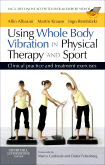
Technology
This was one of the first website in world on Physiotherapy. Some of the content from that 1998 website can still be found here. At the time, the URL was www.acay.com.au/~mkrause/welcome.html ,which represented my practice in Wentworth Falls in the Blue Mountains as well as my International Teaching. It was born from a clinical reasoning software (CAI) which I had developed the previous year, during my Post Graduate Health Science Education course. I had undertaken a DOS 5.0 programming course in 1993, whilst using Word Perfect and Harvard Graphics and Lotus 123 during my research at the Rennbahn Klinik, Basel, Switzerland. 40mB hard drive with 5'1/4'' inch 'floppies' and 4mB RAM. That was my first computer and preloved by one of my clients. At the time, word processing required meta-tags, which meant that by 1998, HTML tags and creating a website were almost second nature. I supplemented my knowledge with Java 1.0 and javascript. The Computer Aided Instruction (CAI) was based on website design and Desktop Publishing. The latter was a TAFE course I undertook, during the last year of my Masters in Manipulative Physiotherapy in 1995. Interestingly, in the early years of this website, it was possible to see where the people were, who were reading it. Readers included people on US Battleships and even a person from HR in the US State Department got in touch!!!
Teaching, Sports and Travel
I left Australia in 1987 to pursue a job in Switzerland. During 1986-1987 I worked in the Illawarra Area Health System, where I met a British Physiotherapist, Bridget, who had worked so closely with James Cyriax, that she was able to apply shoulder injections. She had also worked and travelled with the Royal London Ballet. Fortunately for me, she put me in contact with a Rheumatologist in Basel, Switzerland, who sent my CV to Bad Ragaz, where I was offered a position, starting in April 1988.
This left me with 6 months to travel in South America, where I wanted to learn Portuguese and Spanish, with the ultimate aim of working there or in Mozambique or Angola. At the time, Spanish was the only viable option to learn in Australia. I did this, via correspondence, which the NSW Department of Health paid for. I had a friend, Beatriz Oliviera Gomez, who had just graduated from medicine, in Rio de Janeiro, and I figured Spanish would become a conduit to learn Portuguese when I was in Brazil. School French, Spanish, Portuguese, German and later Italian and some Dutch became very useful for working in Switzerland, later teaching, in some of those languages, around the world.
When I arrived in Bad Ragaz, I was almost immediately asked to teach. I had no more than 16 months clinical experience. This became a recurring theme, where Rolf Baeni and I would give workshops in South America and in particular Chile, but also Brazil and Argentina in Spanish and Portuguese. These workshops included Jenny McConnell's methods, Clinical Reasoning and the Maitland techniques, Neural Mobilisations, Muscle Energy Techniques, Bad Ragaz Ring Method for Hydrotherapy, conference presentations, etc. This reflected the high standing Australian Physiotherapists had in the world.
Bad Ragaz was a place famous in the 'old world' for the thermal springs. Prior to the war, aristocracy would come to spend 3 weeks recuperating and rejuvenating in the springs. Even, in the late 1980's 'the old world' living in the 'new world' would arrive from far flung places such as Tel Aviv, Buenos Aires, Montevideo, Santiago and New York. Bad Ragaz was also famous in the physiotherapy world for the Jim Halliwick hydrotherapy program. He worked with astronauts and cosmonauts on their rehabilitation after extended space missions. Combining the buoyancy and resistance of water for mobility and strength. Bad Ragaz also had a school for physiotherapy workshops and training which had been set up by Dr Zinn. Furthermore, Dr Hohmeister was treating Pope John Paul's knees, as well as other celebrities, including people who would later facilitate us getting contacts in South America, of physiotherapists, who would host our workshops. These were pre-internet days and we needed to 'train the trainers' in order to change the world.
A colleague and friend, Pia Baake was a student supervisor in Bad Ragaz, when a young Swiss Italian speaking student named Alfio Albisini turned up. Together we taught him clinical reasoning in the Maitland methodology, as well as neural mobilisations, in Italian and German. He was almost expelled from his school, in Basel, as a heretic, when he described what we had taught him!!!! We were also reprimanded for teaching avant guard methodology to a student from the Nordic School of Manual Therapy..
A few years later, whilst living in Basil, I encouraged Alfio, to pursue the Australian way, where he went to Curtin University in 1995. He met Bob Elvey, Tobby Hall, Kim Robertson and Max Zusman there. Together with Peter Michel, my old boss and colleague whom I'd introduced the McConnell method to, Alfio became a McConnell instructor which he taught all over the world in multiple languages, including some Arabic. He convinced me to come to a conference in Rome, in 2005, where he invited 'the who's who' of musculoskeletal physiotherapy, including all the famous Australian presenters (Gwen Jull, Jenny McConnell, Bill Vincenzino, Michael Shacklock, Tobby Hall) as well as Freddy Kaltenborn and Ron Melzack, The latter was famous for the 'pain-gate theory'. This was a culmination of his teaching of the McConnell technique as well as his interaction with Tobby Hall and Kim Robertson. Later, he was able to teach the Mulligan technique and with Michael Shacklock the ANT methodology. Alfio has taught these courses for a greater part of two and half decades all over the world. The countless physiotherapists whom he taught and who in turn used their knowledge for the betterment of their clients is hard to imagine. He continued to work as a physiotherapist in his own clinic, whilst still teaching. An amazing achievement.
I went to Switzerland to compete in Road Cycling and Orienteering. I managed to do that as my prime objective for being in Europe. However, the great people around me, especially Pia Baake, Peter Michel and Rolf Baeni, they seriously encouraged me to be more than just an athlete who happens to be a physiotherapist.
I liked the travel with Swiss National Teams, working and training with professional athletes, mixing languages, becoming involved with Reto Wenzil and psychological team building, Olympic development, biomechanics research (Stabilometry, Telemetry, Force Platforms and EMG analysis in Knee and Ankle surgery, as well magnesium and carbohydrate supplementations) at the RennBahn Klinik, Basel, Switzerland and in Magglingen. The Rennbahn Klinik was the conduit to players from AC Milan, Lazio Roma, VFB Stuttgart, Werder Bremen, and FC Basel. We were even made an offer to set up a physio clinic in Milan. These were halcyon days, of a young professional, as well as the climactic ones, where the sky seemed to be the limit. Dr Bernhard Seggesser was the Olympic team doctor and a well known orthopaedic surgeon seeking out perfection. Although a self admitting flawed personality, it was interesting to be working with a genius....and like Bad Ragaz, people would come from all over the world to see us.
Underbelly
On the darker side, I saw the underbelly of the Sydney Olympics. Coaches, managers and athletes having nervous breakdowns before or after the Olympics.....some people (including a doctor) committing suicide, coaches being committed after being found running around the forest stark naked and seeing 'demons' or to the more mundane psychological depression 'let down' after such a major event. The re-adjustment to normal life and the need to re-define themselves and finding new meaning in life was a terrible thing to see.
Working with Tour de France cyclists, National Gymnasts, Olympic Skiers, Rowers, Soccer Players we had seen the impact of anabolic use in the 1980's, yet we turned a 'blind eye' to EPO doping in the 1990's as it was seen as oxygen supplementation where the prevailing attitude was that everyone else is doing it. Later. similar arguments were made with 'recovery' and peptide use. The latter, frequently involved substances which weren't banned but also weren't approved for human use.
Sadly, there was a medical doctor, who missed a pre-existing knee injury, in a very expensive soccer transfer. He had a fatal car accident.
Whilst teaching in Zimbabwe, the lady who hosted me, agreed to treat two journalists who had been tortured by Robert Mugabe's henchmen. They were so brave and for the first time in my life I actually encountered real fear. The fear that we could all be dragged out of beds in the dead of night, the gnawing tightness in the stomach and the tremor in my hands. On the same trip, a few weeks later, a similar experience, where the night watchman, shot dead an intruder. The intruder and the night watchman happened to be brothers of leaders of two opposing gangs in the local Favela (Brazilian slum). Cover up of where it happened, and to whom followed. to prevent escalation of the situation. After these two closely followed events and witnessing the AIDS ward, with it's smell of death, in Harare General Hospital, I decided to stop teaching.
Sport
Thanks to my own involvement in high level Cycling, Mountain Running and Orienteering I had the opportunity to cycle with TDF cyclists and thanks to my job, I was taught to ski by Swiss National Ski Team members. Training and interacting with high performance individuals made me understand the process and pitfalls of training from a personal and professional perspective. At one stage I even managed some significant time out, where I cycled a mountain touring bike around 2/3 of South America in 1990-91, so that the altitude and endurance training would change my physiology for life.
Demographics
What is surprising is how demographics can influence your specialisation. Whilst teaching in Japan, I noted that a lot of people have 'frozen shoulders', whereas in Switzerland I didn't see a single 'frozen shoulder' but it seemed like everyone had Scheuermans Disease. Whilst working in the Blue Mountains, people were generally Blue Collar workers and out door types, pulling sleds to the South Pole or climbing Mt Everest, whereas in the early days in North Sydney, the predominant white collar IT workers had very little muscular physique. Sports specific injuries and physiques are also an interesting variation, where I seemed to generally see people from 'individualistic' type of sports, with the exception of soccer. Interestingly, when working with elite and professional athletes, I'd often come across people who were in the latter part of their career and who had never really been injured enough to see a physiotherapist. This was the case with a tennis player, who at the time was playing doubles with Boris Becker. he was in his late 20's and came to see me with some hip pain. He was such a natural talent, that his abilities were serendipitously discovered, whilst playing ice hockey, with a friend, at 13 years of age. He managed to be ranked 14th in the world rankings and never have an injury!
We often aspire to be an elite athlete and we look at them for perfection, yet in the science of physiotherapy, we are frequently trying to establish a norm. What is it that these 'outliers' can tell us, for the treatment of the general population? Many programs have now been set up, for injury prevention. An example includes FIFA 11 Plus in soccer as well as the modification of sport such as the reduction of ball heading to prevent concussion like injuries. Since, deterministic chaos uses 'outliers' as does game theory, I formed an interest in these areas.
Health advocacy
Even whilst still at school, I lobbied for cycling infrastructure and recognition as an equal road user. Back in the 1970's, where the car was king, we cyclists were a fringe community, who generally knew someone, or knew of someone, killed on the road whilst cycling. As such, I cycled all over the world and saw how things were done elsewhere, I was also a part of the fledgling mountain biking and pack cycling scene. Additionally, road cycling gave me the opportunity, to work and ride with Tour de France cyclists as well as Swiss National Team track and road cyclists. Whilst visiting Montreal for a Biomechanics conference, I discovered the Route Verte of Quebec, with my life long friend and famous Belgium physiotherapist, Jean Louis Thonnard (Catholic University of Louvain, Belgium). This was 1998 and I was living in the Blue Mountains, west of Sydney. We had one of the busiest highways, in Australia, crossing the Blue Mountains, which was getting an upgrade and it followed the railway line. Next to the railway line and through various National Park tracks, there was the opportunity to develop a Trans Blue Mountains Cycling Trail. I created a small group of advocates where we defined our submissions to government, based on the health and economic value of cycling to the community. One quarter of a century on, we're still fighting and gradually getting results. Read more : the Sea to Sky Cycling Trail.
Muscles and the immune system
Having worked at the highest level of sporting endeavours I noticed the link between muscles and the immune system. Moreover, an older person asked me "why are my muscles falling off me?" When I didn't know the answer, as I'd always done in life, I went looking for the answer. The answer was Sarcopenia. In 2002, I had never considered the muscle anything more than a prime mover, but suddenly it was a protein sink for hormones and immune substances. The most important organ of the immune system! The nexus was now complete, muscle-immune-neurophysiology, pain and inflammation. I'd examined hormones and exercise in regards to the thyroid gland, pro-opiomelanocortin, and the locus coereleus back in the day in Bad Ragaz in the late 1980's. One of the first courses I'd ever attended, was on myofascial releases, with Francine St George, where I felt a serious immune reaction to such techniques. Years later I learnt about Myofascial Trains and in 1998 I started Dry Needling. Later, in the mid 2000's, Jay Shah, demonstrated fibroblastic movement activity during dry needling and the release of immune substances!! Anecdotal clinical observations were followed by the scientific evidence, not the other way around!
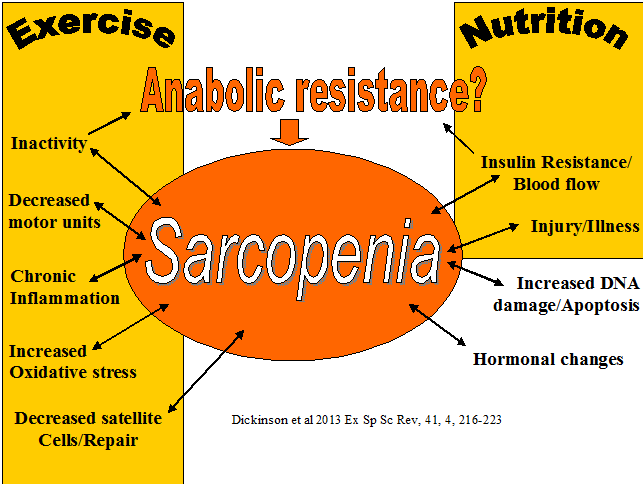

Paradigm shifts
The paradigm on graduation in 1986 was that physiotherapists don't massage, we do joint mobilisations and use electrotherapy modalities. In 1987 I learnt the power of massage from Francine St George and her myofascial release techniques. Trigger point massage followed. Australian Physiotherapists weren't particularly good at exercise prescription, whose void was filled by the introduction of Exercise and Sports Science courses around that time. However, the manual therapy approach was being blended with concepts of motor control by Jenny McConnell. The passive treatment approach paradigm was further confronted when i reached Switzerland, where German speaking physiotherapists had a Krankengymnastic (Remedial Gymnastics) background, where exercise was used for all forms of musculoskeletal dysfunction. As the Iron Curtin fell, the East German physiotherapists, who were frequently graduates of the Sports Science Academy of Moscow added to the strong exercise treatment philosophy. They wanted to learn from me, whilst I was learning from them, functional stabilisation and mobilisation was being used, which for all intents and purposes was core stability. A concept, later made famous by Queensland University researchers (Paul Hodges and Gwen Jull) in the mid 1990's. Classification of low back pain, based on movement disorder, was further developed, by Peter O'Sullivan at Curtin University, in the late 1990's. I was teaching in Japan, in the mid 1990's, where I saw Kinesiotape for the first time being used. Later, whilst teaching in Portugal, I met physiotherapists researching the effect of Kinesiotape. In many countries, whilst teaching, I learnt that many physiotherapists had never used a tendon hammer, yet we could all learn from one another, different approaches to similar problems.

In the 1980's, the concept of University training, in many European countries, was embryonic, let alone the use of clinical reasoning, where medical practitioners dictated diagnosis and treatment prescription. In Switzerland, some friends and colleagues undertook Osteopathy training to make up for this lack of autonomy and lack of University education. Some Chilean colleagues became chiropractors. By the early 2000's, muscles became an organ of the immune system, which could be stimulated through exercise, myofascial releases and trigger point dry needling. The imaging of pain which had begun in the early 1990's was being taken to the ultimate level by Lorrimer Mosely and his treatment of Sudek's Atrophy (CRPS). In the 2010's, functional cortical stimulation was being used for the treatment of chronic knee pain by my friend and ex-student Abrahao Baptista in Brasil. By 2020, those oscillatory systems of joint mobilisation and motor control from the 1980's were being taken, by me, to the level of 'deterministic chaos' where the 'outlier' defines the health of the system.
An incredible journey from the passive joint oscillations to the immune system and eventual 'deterministic chaos theory' in 2020. The best profession ever!!!...at least for me it has been such....and added to these major developments, in thought and knowledge, have been all the positive experiences, I've had with teachers, colleagues and clients, whom I've taught and treated along the way.
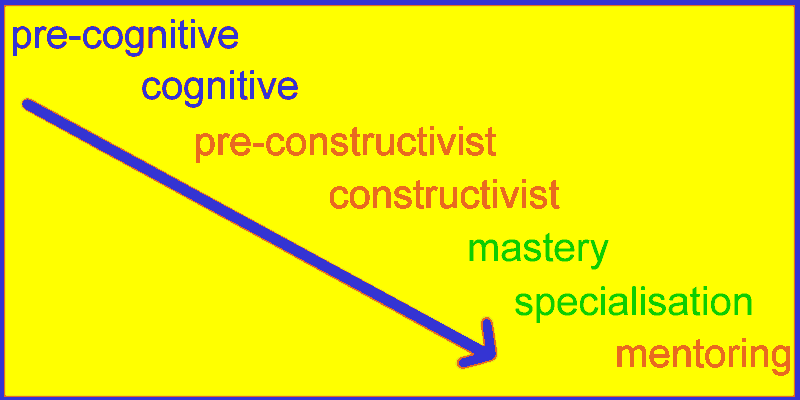
Uploaded : 29 December 2020
Updated : 31 August 2022




